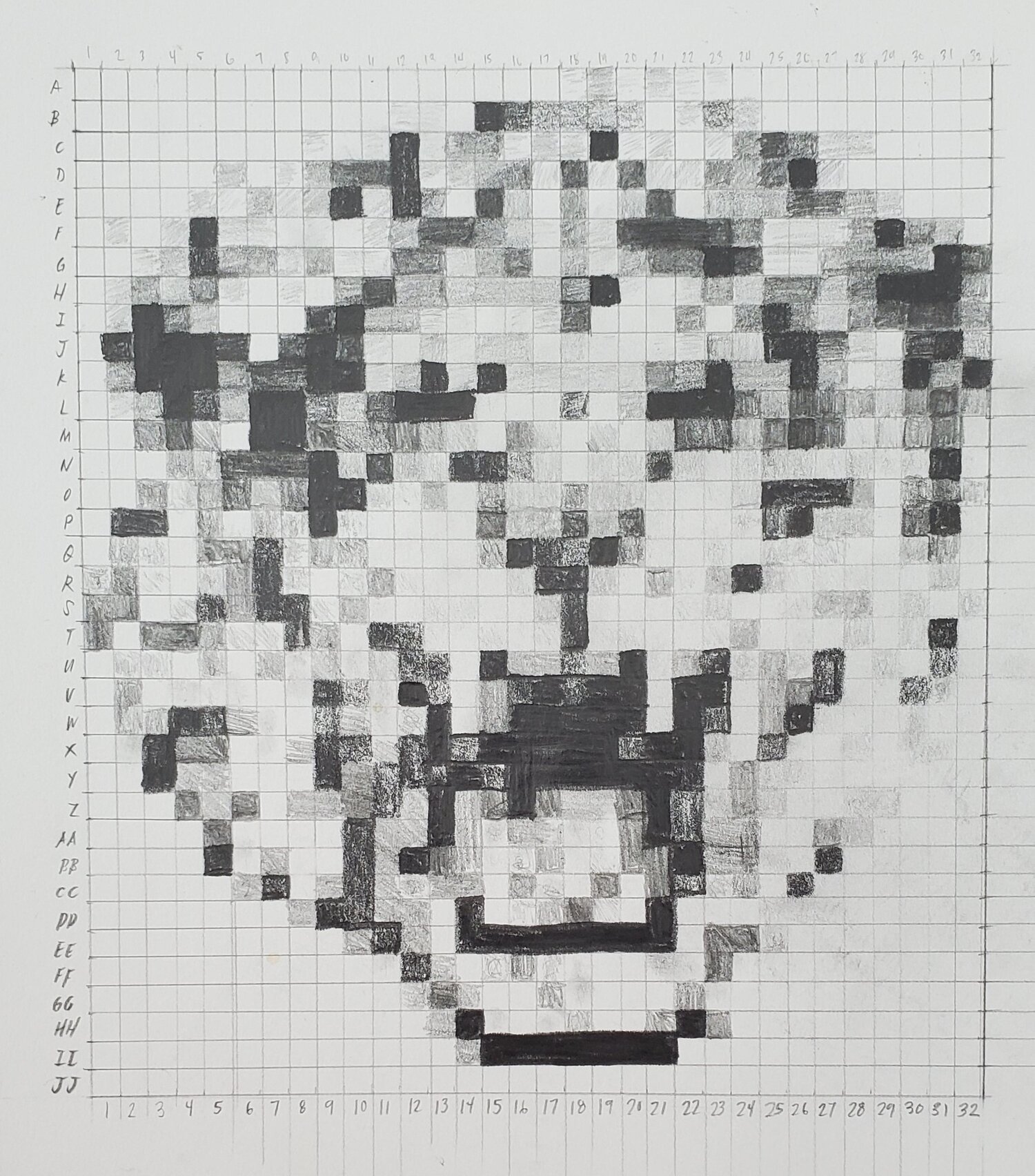Pixelated Art
How to pixelate your art with this grid square lion tutorial
Grid squares bring back memories of land navigation for military veterans, but today we’re going to be tackling how they can be used in creating unique works of art.
The term 'grid square' is used in maps and corresponding coordinates are used for finding a specific location. In this lesson, we’ll be using not only numbers, but letters as well to recreate this picture of a lion into a pixelated masterpiece. Think of it as a “shade by number” exercise.
First, we start with creating a tone chart from 0-7, 0 being no pencil shading to 7 being a solid black. You can use the chart below or use a 1-2B for (lighter shades 1-4), 6B (for shades 5-6), and 8B (for 7). For lighter shades, you can use cross-hatching to build up gradual tones until you need to increase color intensity.
Second, to decide which grid square gets a certain tone, you want to look at the dominant color in each grid square. Whichever tone has the majority wins. So, if you’re looking at a grid square that is about half light and half dark, choose a shade that is in between.
If you decide to do this for your own gray monochrome pencil sketch, make sure you use letters and numbers for your x and y axis.
Third, work your way through the grid squares assigning a tone based on the majority tone. As you go along, your pixelated image will start to emerge like magic!
As mentioned in the video, pixelating your sketches or even a gray-scale photograph can be labor-intensive, but don't worry! Below I've included a cheat sheet that you can replicate on grid paper or by drawing out grid squares in your sketchbook like I did.
Pixelating your sketches can be both time-consuming and intense, but it’s a great way to improve your shading skills and examine your work from a completely different perspective. In the following video, you can see a hyperlapse of this pixelated lion.



